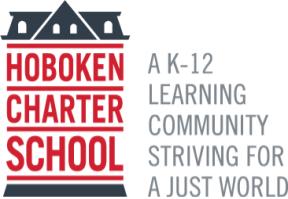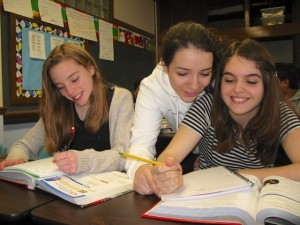Learner-Centered Education
Learner-centered education engages students in active and personalized experiences where students take ownership of learning with teachers as facilitators. This approach enables students to explore academic content while gaining the skills needed to become responsible citizens, independent problem-solvers and self-directed, lifelong learners.
K-4 Student language: I can be an active learner to keep growing in the way that is best for me.
A learner-centered school is a place where teachers and students are committed to one another and share collectively in the school vision. It is a self-governing learning community where all decisions must measure up to the question, “What is best for learners?” In a learner-centered school, students understand the purpose of learning and are provided with meaningful incentives to realize their potential. Students are engaged in meaningful “hands-on” activities that reinforce the connection between “school” knowledge and “real world” knowledge.
A learner-centered school operates according to what we know about how human beings learn, and it is guided by a deep-seated respect for students, teachers, and parents. It is a place that seeks to engage its members in a discussion of ideas and inspires them with the desire to know more. In a learner-centered school, the curriculum is not something that is simply passed along from teacher to student. It is a process through which learners are engaged in actively looking for answers, cooperatively working through problems, accessing information, synthesizing and analyzing it, presenting their hypotheses, testing them, and developing new questions to be explored. We believe that this kind of educational experience leads to more sustained, powerful learning that generalizes to other situations.
A learner-centered school aims to develop a learner who is able to invent and to create, to think powerfully, to act effectively on what she or he thinks, to feel deeply, and to contribute to the community, to the social order, and to the lives of others in some meaningful way. That means being able to understand where others are coming from, what their perspective is and to empathize, at some level, so that the learner can be part of the community. To accomplish this, a number of characteristics define the Hoboken Charter School classroom:
- Its atmosphere encourages the exploration of meaning through a process of personal discovery.
- Learners feel safe and accepted.
- Learners understand both the risks and rewards of seeking new knowledge and understanding.
- Learners are given frequent opportunities to interact new information in a variety of ways that draws on the different ways in which individuals learn
- The teacher is a facilitator or coach who:
- Helps students to identify a problem suitable for investigation.
- Connects the problem with the context of the students’ world so that it presents authentic opportunities for learning.
- Organizes the subject matter around the problem, not the discipline.
- Gives students responsibility for defining their learning experience and planning to solve the problem.
- Encourages collaboration by creating learning teams.
- Expects all students to demonstrate the results of their learning through a product or performance.
It is our strong conviction that in order to learn well and thrive, students must be in classrooms that reflect the goals of the school. To this end, we are committed to creating classes that are small in number and allow optimal time for learning. Students work collaboratively in small groups, debate and discuss in small and large groups, work independently, and listen and view material as a whole. Whatever the format, students are encouraged to see the connections between the material they are studying.
To help students discover these relationships, the Hoboken Charter School structures its curriculum along interdisciplinary lines. For example, mathematics can be taught as a means of explaining scientific phenomena. The patterns of tides, the economics of deforestation, the movement of muscles all reveal the interdependency of these disciplines. Along the same lines, understanding the origins of the Bill of Rights is not simply an exercise in remembering names and dates. It requires an understanding of historical context, motivations, arts, and literature. We believe that students who are able to see the interconnections of various subjects, who learn that learning itself is a process of synthesis and analysis, will be more open to using these skills to turn outward to examine and address issues of relevance in their own lives and communities. In this way, the community itself becomes an extended classroom of the Hoboken Charter School.
Continue reading about our honors and awards…

